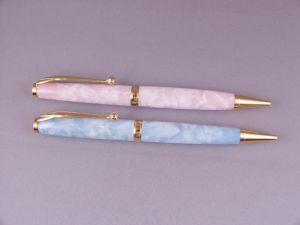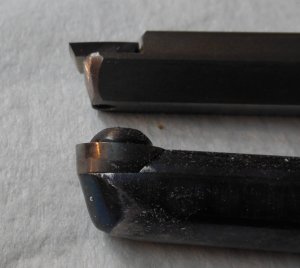I know you had several different tips and trick above.
I agree with much of it. Painting acrylics is a must. There is a very FEW that don't need it, but I tend to put it into my workflow anyway. Acrylics get drilled.. then painted, then set aside for at least a day to dry (often longer) before the next steps.
What sand paper you start with is a factor of several things, but if you are new to acrylics, the odds are great that 800 is too high no matter how sharp your tools. Turning acrylics has a different "feel" than wood. The ripples in the finish that Ed pointed out look "more than 800 grit" to me... Maybe 320 or 400 would be a better point to get those out. Also since those are all "around the pen" ripples it would be best to do some work "the long way" on the pen. That could be sanding with the lathe off or it could be buffing as well.
Welcome to the world of acrylics! They are a different beast but worth the time. One last note - just when you think you have it figured out you will pick up a new acrylic and have to start over. There is a variety of types out there and they don't all "act" the same!








